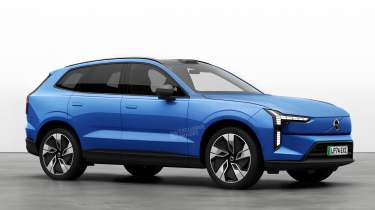Volvo hasn’t confirmed whether the advanced LiDAR driver-assistance tech on the flagship EX90 will filter down to ‘lesser’ models, such as the forthcoming EX60. Chief Product and Strategy Officer, Erik Severinson did, however, tell us that the brand is experimenting with “different kinds of [safety] sensors going forward”.


Volvo’s next-generation SPA3 platform
As well as being the first model to feature Volvo’s new ‘multi-adaptive safety belt’ technology, the EX60 will also be the first built on the company’s next-generation SPA3 platform. It’s being described as “groundbreaking” and “designed for longer range, efficiency and intelligent core computing”.
Supposedly all these developments will make the EX60 “a car that evolves with you”. What exactly does that mean? All we know right now is that “SPA3 is designed to learn and adapt over time with new features and capabilities, helping redefine what it means to engineer, own, and experience a car”.
Advertisement – Article continues below
The SPA3 platform will also allow Volvo to develop and build cars of all sizes using the same technology. Being a scalable architecture, it also means the Swedes can create increased synergies and share key components across all cars built on this platform, which reduces complexity and can help bring down the cost of production.
Volvo EX60 range and battery capacity
Another advance that will set the EX60 apart from other electric Volvos will be its “structural” battery pack. This technology has already been adopted by the likes of Tesla and BYD, and in effect it bonds the battery pack with the floor of the car. The result, Severinson told Auto Express, is “improved energy density” and, given the extra structural rigidity, “great driveability”.
The EX90 uses a huge 107kWh (usable) battery pack that offers a range of 374 miles on a single charge. Given the EX60’s smaller size, we expect to see a slightly more compact, lighter battery fitted. The increased energy density of its structural battery pack could see range figures for the lighter car approaching the 400-mile mark, however.
